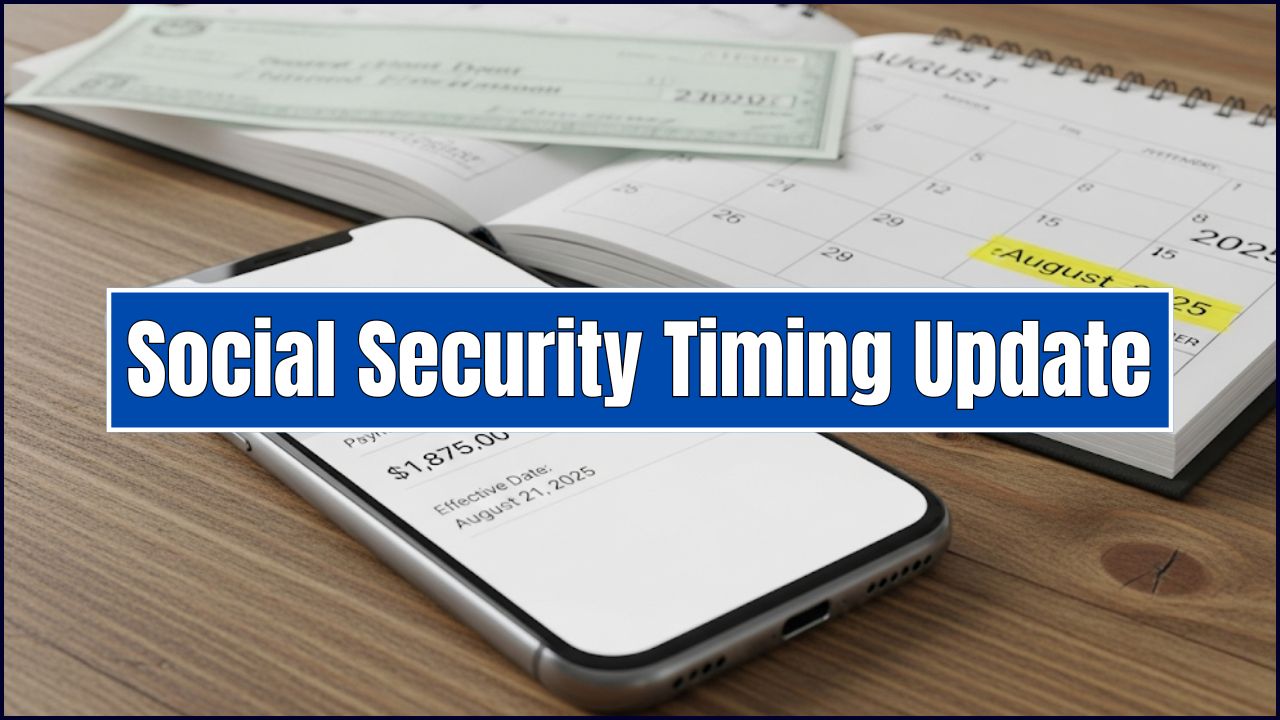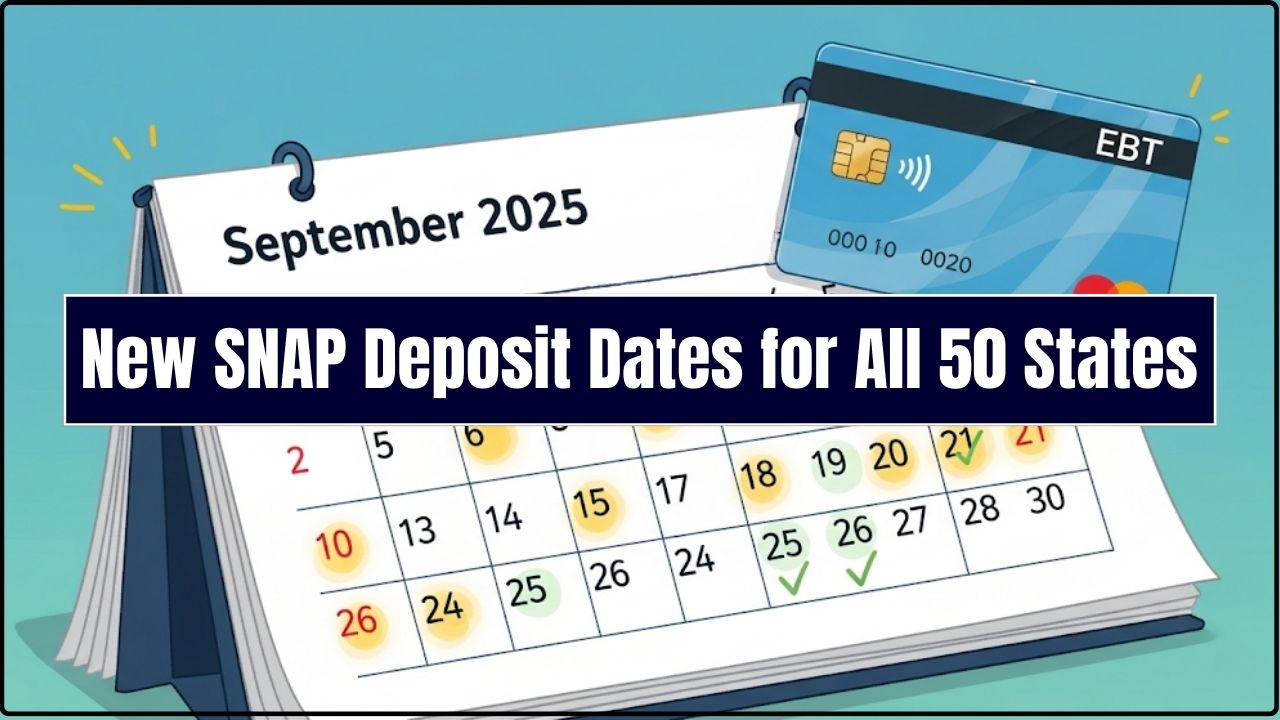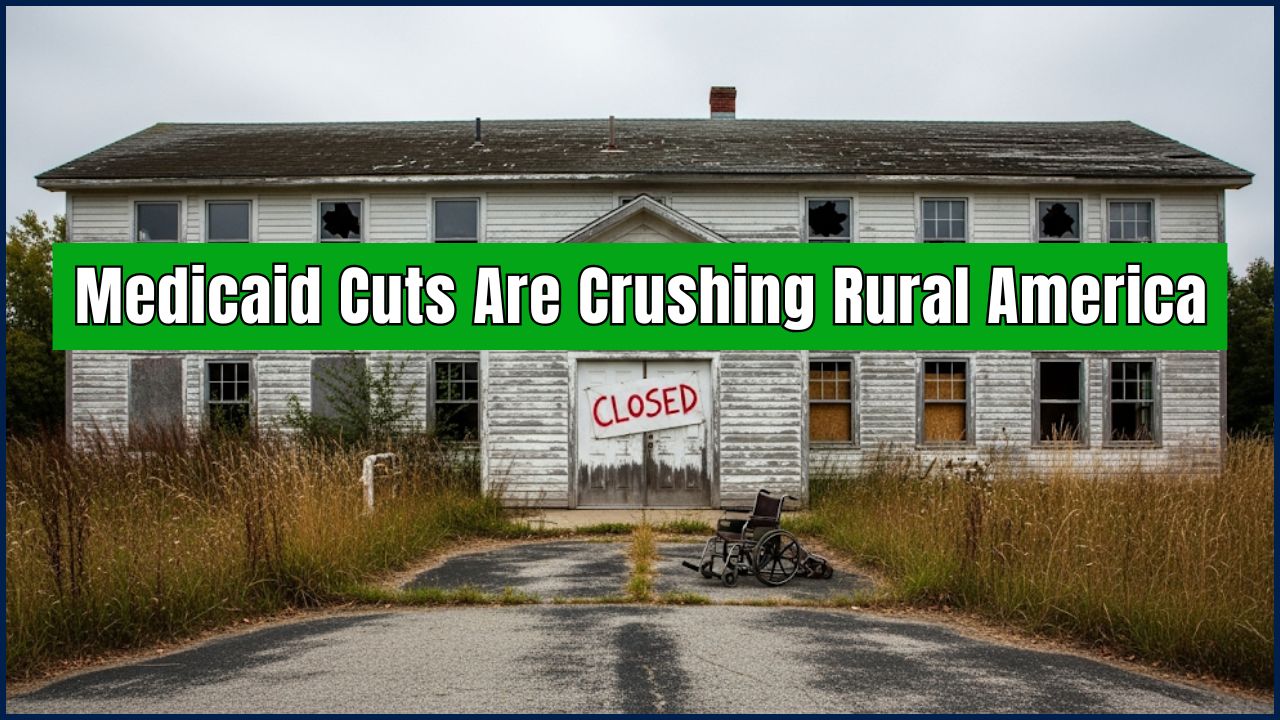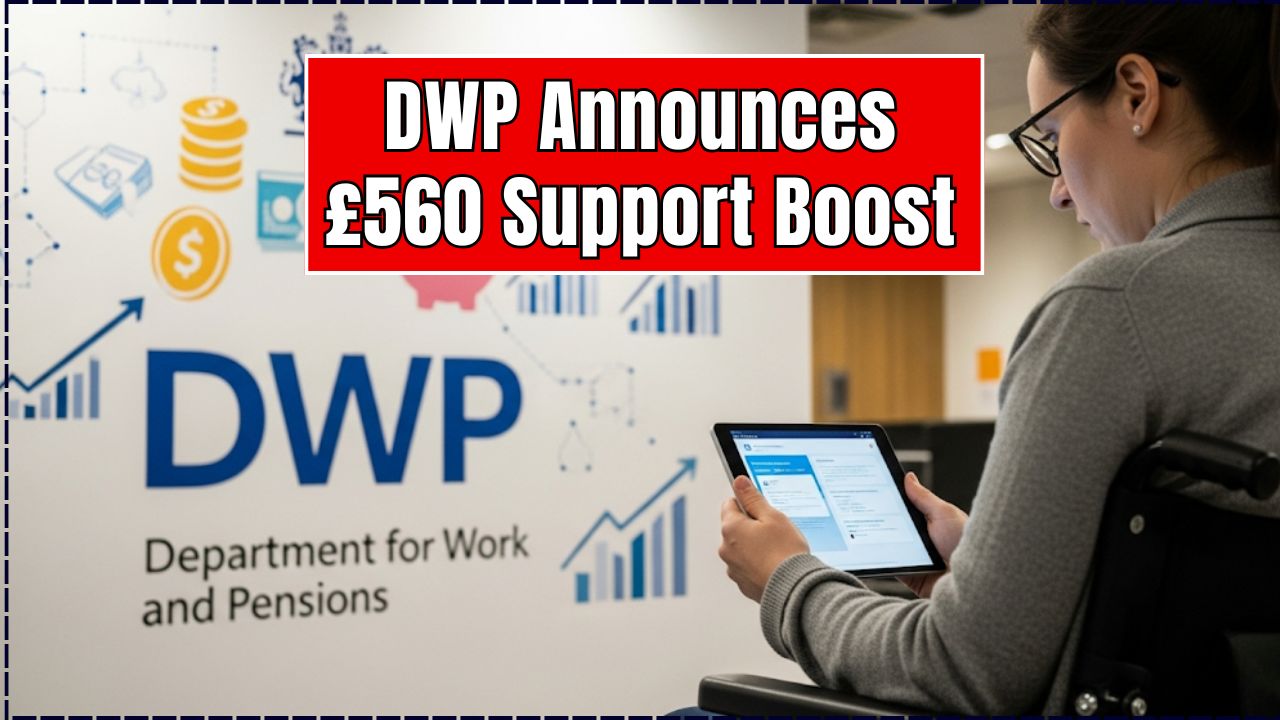Rural America, we need to talk. Medicaid cuts are hitting hard, and it’s not just about numbers on paper. It’s about your grandma’s ER visit, your neighbor’s cancer treatments, and the maternity ward that just shut down in the next county over. This isn’t a drill—it’s real, it’s serious, and it might be happening to your local hospital next.
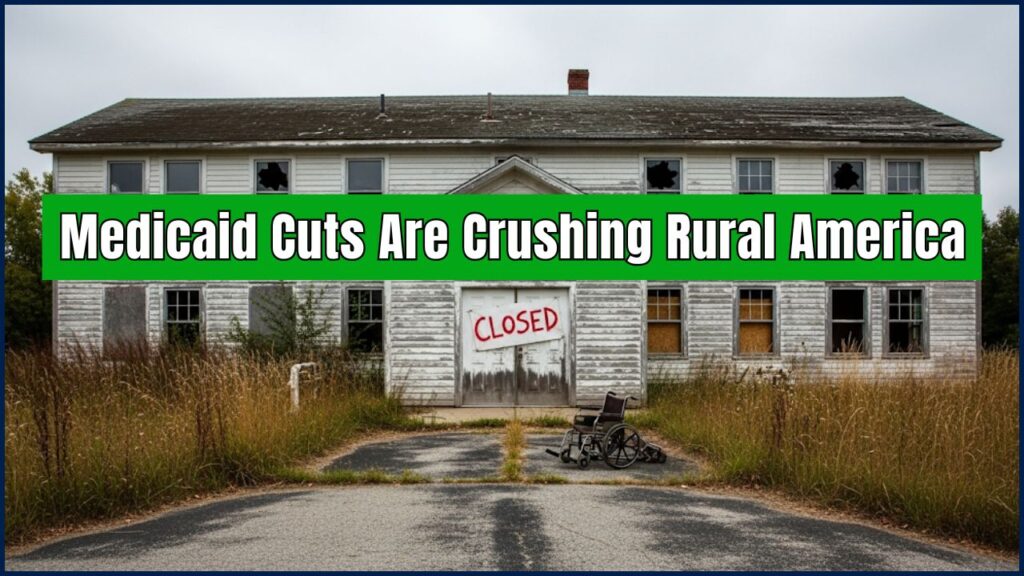
In July 2025, the U.S. government passed what’s being dubbed the “One Big Beautiful Bill” (OBBBA). The name may sound shiny, but for small towns and rural communities, it’s a sledgehammer. This bill slashes over $911 billion from Medicaid over the next decade. You heard that right. And in places where Medicaid covers 1 in 4 residents, the consequences are already unfolding.
Medicaid Cuts Are Crushing Rural America
| Point | Details |
|---|---|
| Total Medicaid Cuts | $911 billion over 10 years |
| At-Risk Hospitals | 700+ rural hospitals, 300 at immediate risk |
| States Most Affected | Oklahoma, Kentucky, Nebraska, West Virginia |
| Local Closures Example | Curtis, NE—only clinic closing Sep 30, 2025 |
| Rural Hospital Fund | $50B fund created, but falls short of actual losses |
| Professional Impact | Loss of healthcare jobs, reduced emergency care access |
| Link to Official Site | Centers for Medicare & Medicaid Services (CMS) |
The Medicaid cuts brought by the OBBBA are a gut punch to rural America. Hospitals are more than buildings—they’re anchors for communities, employers, and literal lifelines. Whether you’re a doctor, patient, or concerned citizen, it’s time to act. Advocate, donate, share, and fight. Your community’s health depends on it.
What Is Medicaid and Why It Matters in Rural Areas
Medicaid is like your community’s financial safety net. It’s a federal-state program that helps cover medical costs for folks with low income, disabilities, and senior citizens. In rural America, Medicaid is a lifeline. Over 60% of hospital revenue in some rural counties comes from Medicaid.
Now imagine cutting that revenue in half. That’s what many rural hospitals are staring down.
A Quick Look at the Numbers
- Nearly 1.8 million rural Americans may lose Medicaid coverage (American Hospital Association).
- $70 billion expected loss for rural hospitals over the next decade.
- Over 35 rural hospitals in Kentucky alone are on the chopping block.
- In Oklahoma, 39 critical access hospitals could close.
These aren’t just statistics. These are your neighbors, your friends, your community.
Real-Life Impact: The Curtis, Nebraska Story
Take Curtis, NE. It’s a town of around 800 people—tight-knit, proud, and until recently, home to a local clinic. That clinic is shutting its doors this fall. Why? They can’t keep up with costs. Medicaid reimbursement isn’t cutting it anymore.
What does that mean? Residents now face a 45-minute drive to the nearest ER. For someone having a heart attack or a complicated birth, that could be the difference between life and death.
And this is just the beginning.
What the “One Big Beautiful Bill” Actually Does
Don’t let the name fool you. The OBBBA is a sweeping budget bill that:
- Cuts $911B in Medicaid support over 10 years.
- Narrows eligibility requirements.
- Pushes states to manage Medicaid funding more independently.
- Offers a $50B Rural Hospital Fund, which critics say is a drop in the bucket.
Think of it this way: they took away the main bridge into town and gave you a canoe to cross the river.
Who’s Most at Risk?
Hospitals
- Critical Access Hospitals (CAHs) serving populations under 2,000.
- Non-profit rural health clinics with high Medicaid reliance.
Professionals
- Nurses, ER doctors, lab techs, and even janitors stand to lose their jobs.
- Medical students may skip rural rotations or careers due to uncertainty.
You, the Patient
- If you’re pregnant, elderly, chronically ill, or simply far from a city, these cuts hit you hardest.
Medicaid Funding: The Old vs. The New
| Feature | Current Medicaid Funding Model | Proposed Medicaid “Block Grant” Model |
| Funding Structure | An open-ended federal-state match, meaning the federal government’s contribution increases as a state’s healthcare needs and enrollment grow. | A fixed, predetermined annual payment to each state, regardless of changes in enrollment or healthcare costs. |
| Responsiveness | Highly flexible. Can scale up to cover more people during economic downturns, public health crises, or natural disasters. | Inflexible. States are on their own to cover any additional costs or patient needs beyond the fixed grant amount. |
| State’s Role | States have broad discretion on how to use their federal funding but must adhere to core federal guidelines. | States would have more control over how funds are spent but would be forced to make tough choices about who to cover and what services to cut. |
| Impact on Rural Areas | A stable, reliable source of revenue for rural hospitals, which often serve a high percentage of Medicaid patients. | Could lead to a significant funding gap, putting immense pressure on rural hospitals and potentially forcing them to reduce services or close. |
Voices from the Field: What Healthcare Workers Are Saying
We spoke to several frontline healthcare professionals to get their thoughts:
“We’re already operating on a shoestring. If Medicaid drops more, I don’t know how we keep the lights on.”
— Angela Torres, RN, Rural Oklahoma
“We lose this hospital, we lose our identity. We deliver babies, treat heart attacks, stitch up farm injuries. This is our town’s beating heart.”
— Dr. Greg Lyle, Physician, Kentucky
These aren’t just concerns; they’re warning signs.
Economic Ripple Effects
The closures don’t just affect healthcare. They ripple through:
- Local Jobs: Rural hospitals are often the largest employer in town.
- Business Attraction: No hospital? Good luck attracting a factory or startup.
- Real Estate: Home values decline when access to care disappears.
- Education: Fewer healthcare facilities = fewer training opportunities = fewer young professionals sticking around.
Rural health is tied to rural prosperity.
What Can You Do? A Step-by-Step Guide
1. Contact Local Lawmakers
Reach out to your senators and representatives. Call, write, or email. Tell them how essential Medicaid is to your local health system.
2. Support Rural Health Advocacy Groups
Groups like the National Rural Health Association and Save Rural Hospitals are fighting the good fight. Join them.
3. Share Your Story
Whether you’re a patient, provider, or just someone who cares—talk about it. Write an op-ed. Post on Facebook. Tag your reps on social media.
4. Push for Telehealth Expansion
Telemedicine can soften the blow. Advocate for broadband in your community and remote health access policies.
5. Volunteer or Donate Locally
If your local clinic is struggling, ask how you can help. Some run on volunteers and donations.
6. Stay Informed
Subscribe to Rural Health Voices or set Google Alerts for your hospital name, Medicaid, and healthcare news.
Top 3 Myths About Rural Hospital Closures
- Myth #1: Only small, failing hospitals are closing. Fact: Many of the hospitals that have closed were profitable and well-run. The financial strain often comes from factors outside their control, like low patient volume and poor reimbursement rates.
- Myth #2: It’s just a business problem, not a community one. Fact: A rural hospital is often the largest employer in the area. When it closes, it’s a huge blow to the local economy, leading to job losses and a cycle of decline.
- Myth #3: These closures only affect people on government insurance. Fact: When a hospital shuts down, everyone in the community is affected. People with private insurance must travel farther for all types of care, and in an emergency, those extra miles can be the difference between life and death.
FAQs
Why are rural hospitals closing?
Most rural hospitals rely heavily on Medicaid. With huge funding cuts, they can’t keep up with operational costs.
What is the Rural Hospital Fund?
It’s a $50B federal pot created to help offset losses, but it’s not enough to replace over $900B in cuts.
Will my local hospital shut down?
If your hospital serves mostly Medicaid patients and has slim profit margins, it could be at risk. Talk to hospital admin or visit your state health department for updates.
What services are cut first?
Typically maternity wards, mental health units, and emergency departments go first because they’re costly and under-reimbursed.
Can telehealth replace physical hospitals?
Not entirely. Telehealth helps with checkups and some monitoring, but emergencies still need in-person care.

